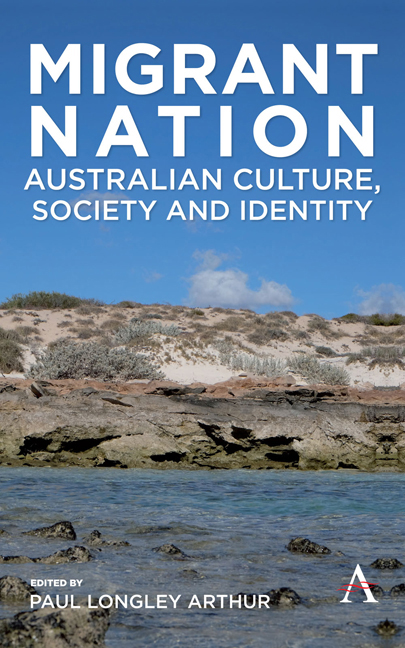Book contents
- Frontmatter
- Contents
- List of Figures
- 1 Introduction: Transcultural Studies in Australian Identity
- 2 Remembering Aboriginal Sydney
- 3 Files and Aboriginal Lives: Biographies from an Archive
- 4 Writing, Femininity and Colonialism: Judith Wright, Hélène Cixous and Marie Cardinal
- 5 The Staging of Social Policy: The Photographing of Post-War British Child Migrants
- 6 Writing Home from China: Charles Allen's Transnational Childhood
- 7 Australian? Autobiography? Citizenship, Postnational Self-Identity and the Politics of Belonging
- 8 A Nikkei Australian Story: Legacy of the Pacific War
- 9 Displaced Persons (1947–52) in Australia: Memory in Autobiography
- 10 Between Utopia and Autobiography: Migrant Narratives in Australia
- 11 Vietnamese–Australian Life Writing and Integration: The Magazine for Multicultural and Vietnamese Issues
- 12 Heroes, Legends and Divas: Framing Famous Lives in Australia
- List of Contributors
- Index
1 - Introduction: Transcultural Studies in Australian Identity
Published online by Cambridge University Press: 10 May 2018
- Frontmatter
- Contents
- List of Figures
- 1 Introduction: Transcultural Studies in Australian Identity
- 2 Remembering Aboriginal Sydney
- 3 Files and Aboriginal Lives: Biographies from an Archive
- 4 Writing, Femininity and Colonialism: Judith Wright, Hélène Cixous and Marie Cardinal
- 5 The Staging of Social Policy: The Photographing of Post-War British Child Migrants
- 6 Writing Home from China: Charles Allen's Transnational Childhood
- 7 Australian? Autobiography? Citizenship, Postnational Self-Identity and the Politics of Belonging
- 8 A Nikkei Australian Story: Legacy of the Pacific War
- 9 Displaced Persons (1947–52) in Australia: Memory in Autobiography
- 10 Between Utopia and Autobiography: Migrant Narratives in Australia
- 11 Vietnamese–Australian Life Writing and Integration: The Magazine for Multicultural and Vietnamese Issues
- 12 Heroes, Legends and Divas: Framing Famous Lives in Australia
- List of Contributors
- Index
Summary
It's my present that is foreign, and […] the past is home, albeit a lost home.
(Rushdie 1991, 9)Strangely, the foreigner lives within us: he is the hidden face of our identity.
(Kristeva 1991, 1)As a former colony of Great Britain, Australia has faced the dual challenge experienced by all settler colonies of forging an identity that allows it to distinguish itself from its ‘parent’ culture at the same time deal with its complicity in the colonization of the new land and the treatment of its original inhabitants. In the case of Australia, this situation has been further complicated by the fact that the land was simply taken – without a war, without a treaty and without negotiation. Throughout its European history, Australia has needed to perpetuate its founding myth of being a previously uninhabited land. The false descriptor terra nullius was the framing principle for a mythology and a moral platform with repercussions that are felt to this day. This principle has facilitated long-term ‘historical amnesia’ (Young 1990, 25) and provided justification for ruthless racial policies designed to serve the dream of a young, white egalitarian society building a nation in a ‘new’ land. Australian writer Peter Carey has commented, ‘We preferred to forget the doctrine of Terra Nullius to justify theft and murder’. Forgetting ‘is a habit for us’, he says, adding, ‘as it is for most people’.
A few years before Australia's bicentenary in 1988, Richard White pointed out that while every new nation has to go through the process of inventing an identity, in Australia it is ‘a national obsession’. Australia, he reflected, ‘has long supported a whole industry of image-makers to tell us what we are’ (White 1981, viii). Other scholars since then have directly addressed the topic of the construction of Australian identity, using a wide variety of approaches. In these explorations an undercurrent of anxiety has repeatedly been identified in the self-image that Australia has projected. This anxiety has many possible causes, but prominent among them is the uncomfortable recognition, growing stronger over recent decades, that the old identity ‘brand’ is now so far from the reality of what Australia has become in its national policies, practices and the daily life of its citizens that it can no longer be invoked without irony.
- Type
- Chapter
- Information
- Migrant NationAustralian Culture, Society and Identity, pp. 1 - 20Publisher: Anthem PressPrint publication year: 2017



